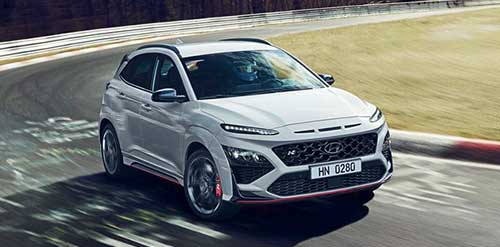Hyundai Motorstudio Senayan Park
Hyundai Motorstudio Senayan Park
Newsroom
The official news from Hyundai Motorstudio Senayan Park and a collection of innovative articles on mobility and sustainability here.
-
4 Best Eco-Friendly Products from Hyundai
- Hyundai Motorstudio Senayan Park Senayan Park 2022.06.16
-
In recent years, the automotive industry has taken concrete steps to reduce carbon emissions by producing eco-friendly cars. Hyundai is not much different!
As one of the best automotive manufacturers, Hyundai has a blueprint that is committed to using clean energy by making environmentally friendly cars. The target is to produce 18 car lines by the end of 2025.
Hyundai has started this step by releasing several eco-friendly cars in the past few years. Especially for the hybrid version, Hyundai has even released it first.
Using Eco-Friendly Materials Since 2014
Nowadays, being eco-friendly is a must. Eco-friendly is not only related to the fuel, but also the basic material to build a car, including the production process.
Eco-friendly materials mean eco-friendly cars. This concept has been and is being implemented by Hyundai in several car lines.
Hyundai produces electronic vehicle (EV) cars from environmentally friendly materials, which have actually been applied long before the EV line was released to the market, like the second generation of 2014 Kia Soul which is equipped with an eco-friendly interior.
The majority of car manufacturers use thermoplastic olefin (TPO) compound to make dashboards. TPO material can still be recycled, but propylene and polyethylene which are used as basic materials require fossil fuels in the process.
On the other hand, the TPO applied to Soul comes from bioplastics. This is clearly more eco-friendly because it balances carbon emissions with carbon removal through carbon offsetting techniques.
The interior that covers the door is designed from eco-friendly materials, and this can be seen clearly when entering the cabin. Likewise, the chairs, headrests, and carpets are all designed using bio-fiber materials.
The result, Soul line is composed of 24 kg of biomaterial and 10% bio-fiber. What must be understood, it is impossible for manufacturers to apply 100% biodegradable plastic materials because it will make the car degradable quickly by small organisms or light.
Hyundai Eco Car List
Hyundai is fully committed to protect the environment through several cars that are powered by clean energy. This eco-friendly car is defined as an EV model that relies on electricity.
1. ix35 Fuel Cell
In February 2013, the ix35 fuel cell model was assembled, making Hyundai the first automaker to provide electric cars for commercial use. The main design is based on the 2001 Santa Fe model.
Having an output of 100 kW and a tank capacity of 5.64 kg of hydrogen, the ix35 is capable of traveling 600 km on a single charge. Electrical power is then stored in a 24 kWh lithium-ion battery.
2. Hyundai Ioniq
In 2016, Hyundai released the Ioniq which is the first car equipped with three electric engines, which are hybrid, plug-in hybrid, and full electric. This configuration is available to suit buyer needs.
The most notable characteristics of the Ioniq model is the use of eco-friendly recycled materials, and only used a small portion of oil-based components.
The most common issues in environmental campaigns are reducing plastic, and Hyundai has released the Ioniq series that focuses on this issue. The interior lining on the door is made of natural plastic combined with wood fiber to make it more durable and can be recycled when the life cycle ends.
The seat lining is made by extracting the cellulose from eucalyptus trees, while soybean oil is used for the production process, and the paint is obtained from palm extract.
In general, the plastic in the interior of Ioniq is made from cellulose, wood fiber. Hyundai Ioniq is claimed not to produce carbon emissions which are considered the biggest pollution caused by vehicles. As an electrical car, the Ioniq is equipped with a rechargeable battery without an internal combustion engine.
3. All-New Nexo
In the past few years, Hyundai released the second generation of electric cars in the All-New Nexo line. Using the updated ix35 platform, this car offers a longer range, up to 800 km.
The All-New Nexo is the first SUV to be powered by hydrogen with an intelligent steering system and autonomous driving. With its capabilities, this model is predicted to be a standard for eco-vehicles that are currently being developed by various manufacturers.
As for Hyundai, the All-New Nexo is a flagship line and at the same time as an affirmation of the company's commitment to take part in environmental campaigns through eco-friendly cars.
4. All-New Kona
Hyundai recently introduced the All-New Kona line, which is the second generation of electric cars after the Ioniq model. The Kona is the first fully electric compact SUV for the European market.
Hyundai combines two of the most in-demand automotive trends today, which are electric cars and the progressive design of the SUV platform. The all-new Kona is available in two battery options.
The higher version offers a maximum range of up to 470 km with a 64 kWh battery. The engine configuration is capable of delivering an output of 150 kW, which means it can accelerate to 100 km per hour in 7.6 seconds.
For lower versions, the All-New Kona is capable of traveling up to 300 km on a single full charge. With a lower battery capacity, 39 kWh, this model will cover a maximum distance of 300 km with a maximum output of 99 kW.




